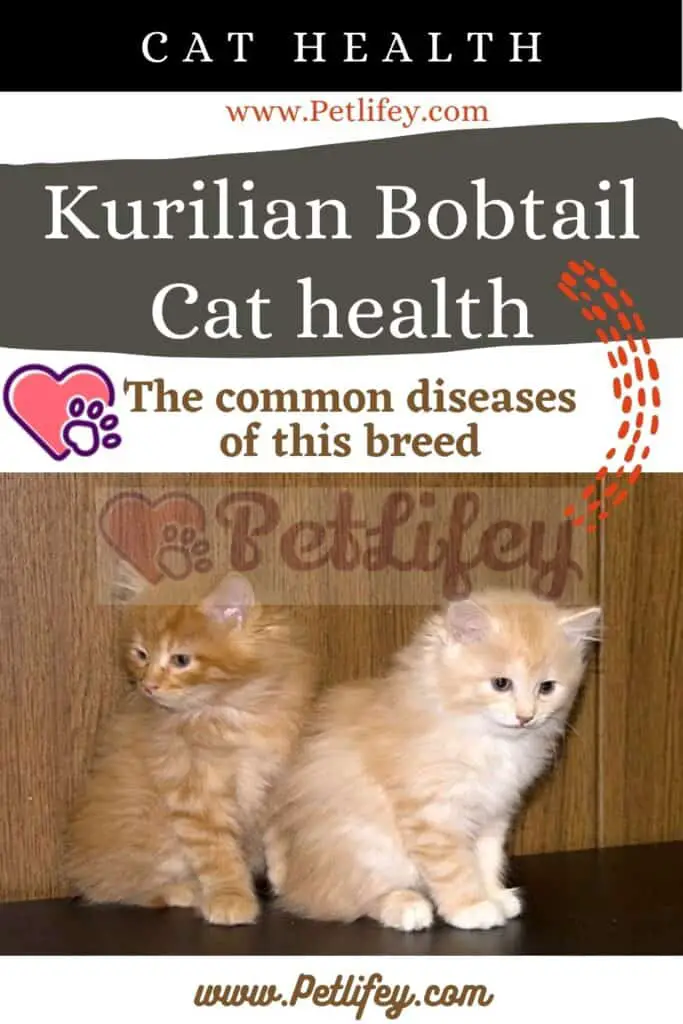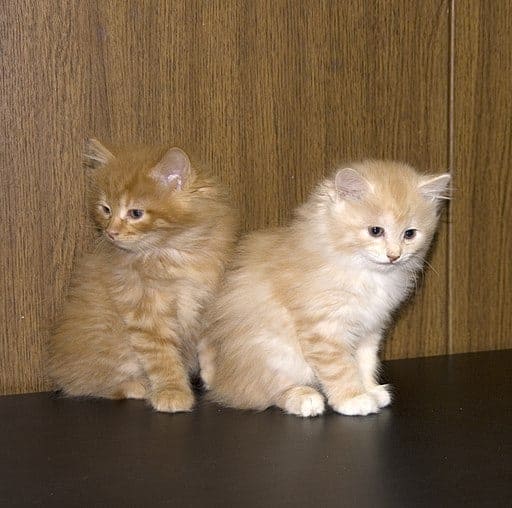Diseases of the Kurilian Bobtail, the main pathologies of this cat breed of Russian origin. Let’s find out what they can be.

There are some cat breeds in the world that have healthy and sturdy builds.
For this reason, they are hardly prone to specific diseases that can create major health problems, such as in the case of our Kurilian Bobtail.
Nevertheless, despite being an athletic and muscular specimen, he is not immune to the diseases that can affect all felines. Let’s see what are the diseases of the Kurilian Bobtail.
Diseases of the Kurilian Bobtail

Even if he is lucky enough in terms of health, the Kurilian Bobtail could, in any case, be affected by problems common to all cats. Let’s find out what are the diseases of the Kurilian Bobtail.
The Kurilian Bobtail is a very sweet, affectionate, sociable cat and loves to spend time with his human family, which he enjoys playing with.
It is a very active and lively cat, the difficult living conditions in such a harsh climate, has favored a natural selection that today leads the kurilian, to be a robust, strong cat with a good constitution.
If well cared for and vaccinated, it can live safely even up to 15-20 years of age.
The fact remains that, like all other cats, it could be affected by common pathologies.
Here are the main diseases of the Kurilian Bobtail and beyond:
- cat urinary tract disorders : the causes of urinary tract disorders can be different. It is certainly an inflammation and therefore the cause that generates it must be discovered. In the cat you will notice signs such as: licking the genitals, in a compulsive and morbid way; dark colored urine, restlessness, discomfort, depression, agitation and anxiety. It will be necessary to seek medical attention as soon as possible to solve the cat’s problem;
- digestive problems: when the cat shows problems during meals such as: difficulty in eating, just can’t get close to food; severe abdominal pain; bad breath; sudden weight loss. It is very likely that there is a digestive problem. Among the most common, for example, is the presence of parasitic infections, which occurred through the ingestion of parasites together with any prey, which in turn were carriers. Another cause that could lead to digestive problems could be related to the ingestion of hairballs. Which is why experts suggest brushing the Kurilian Bobtail almost every day: with the proper brush, we could take away the excess hair and prevent him from knocking it down, causing problems for his own organism. Finally various kinds inflammations, which goes to damage the normal functioning of the pancreas, stomach, liver or intestine. The triggering cause is usually bacterial, but then it depends on the specific case.
Other common diseases in cats
- Allergies in cats : To be able to understand that the cat is an allergic subject, just observe it. If the animal tends to scratch itself until it scratches itself, sometimes even to the point of injuring itself, it is easy for the animal to suffer from some skin allergy. Allergies that tend to affect cats can be of various origins.
- Abscess: It is an infection that we can observe on the paws, behind the tail or on the muzzle of the animal. It occurs when there are deep wounds on the cat’s body;
- Conjunctivitis: This is the inflammation of the mucous membranes of the cat’s eye. If the cat tears from one eye or both, it could be suffering from conjunctivitis, an inflammation that affects the transparent layer that covers the anterior part of the eyeball and the inner surface of the upper and lower eyelids (the conjunctiva, in fact);
- FIV: Feline Immunodeficiency Syndrome (FIV) is an infectious disease caused by a retrovirus. The FIV virus is not able to infect humans or other non-feline animals, it is transmitted directly by direct contact, through the exchange of organic fluids (saliva, blood) and is not resistant to the environment. To date, there is still no cure for IVF. However, checks, periodic vaccinations, good hygiene and proper nutrition can improve and extend the life of the cat;
- Mycosis: It is a disease caused by fungi, which can cause redness, scabs and other symptoms that cause the cat to scratch constantly, with the risk of spreading the infection to other parts of the body. Transmission occurs by direct contact and in some cases the cat may not show symptoms but be a healthy carrier;
- Otitis: is the inflammation of the epithelium that covers the ear canal of the auricle. It can be external, internal or attack the middle ear. The causes can be multiple and can even become chronic in cats. It occurs mainly in cats with low immune defences;
- Periodontitis : A disease of the cat’s mouth which, if not treated in time, can even be fatal. Periodontal diseases occur with greater frequency in the elderly cat, but not only: over 3 years of age many cats begin to suffer from these disorders;
- Mange: is caused by a mite of which there are several species and subspecies. These mites cause severe skin infections in cats, generally starting in the face and ears and spread to the rest of the body and are highly contagious. Mange in cats causes eczema-like symptoms: itching, scabs, patchy hair loss.
- Toxoplasmosis : It is an infectious, parasitic disease caused by the parasite Toxoplasma gondii, which finds its final host in the feline where it can reproduce. The cat can become infected when it feeds on contaminated rodents and birds or by ingesting raw meat. Stray cats and those accustomed to living outside are more prone to contract the disease, but the fact remains that even our Kurilian Bobtail who lives at home can become infected by ingesting an infected animal taken from the garden.






